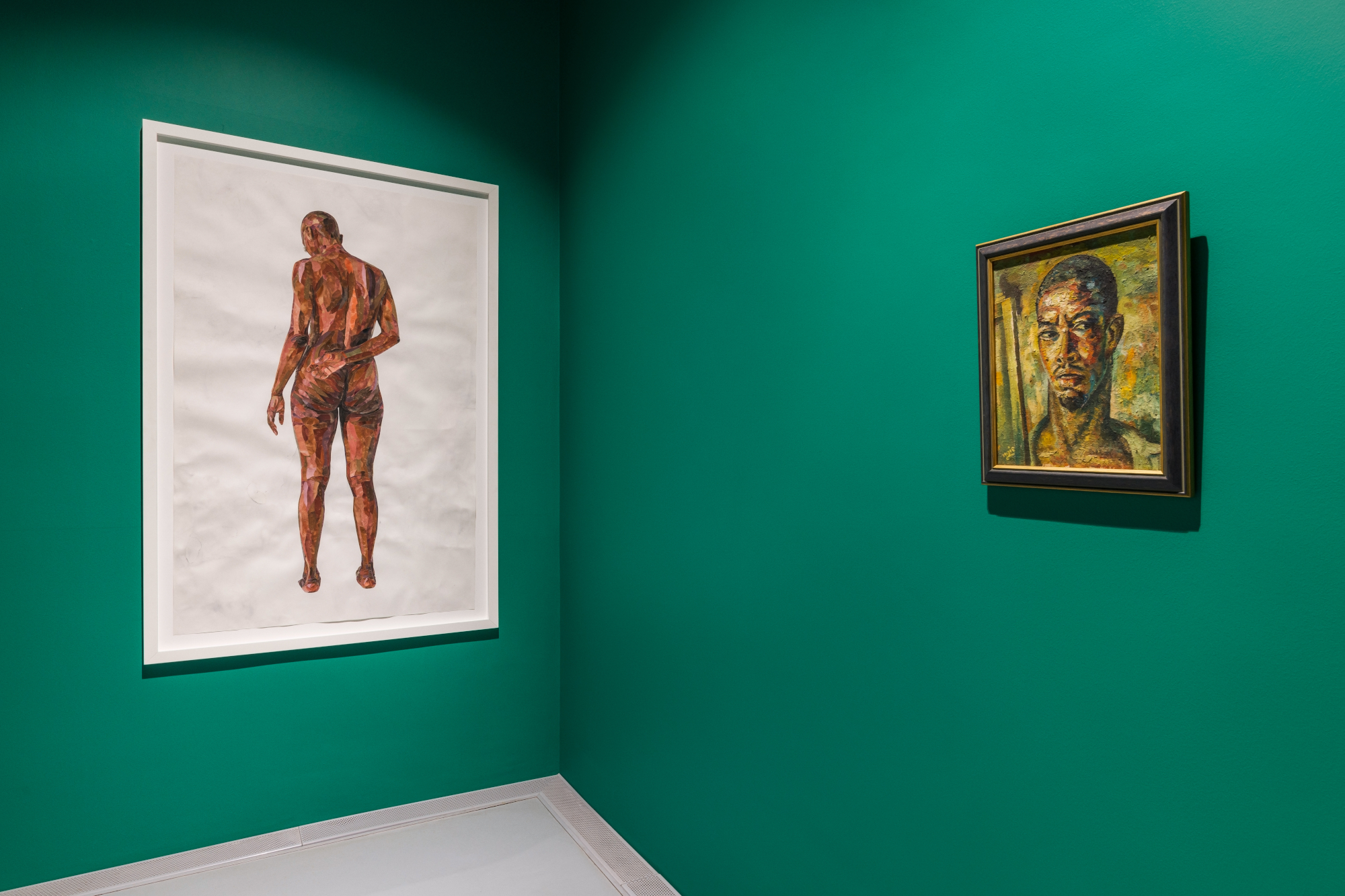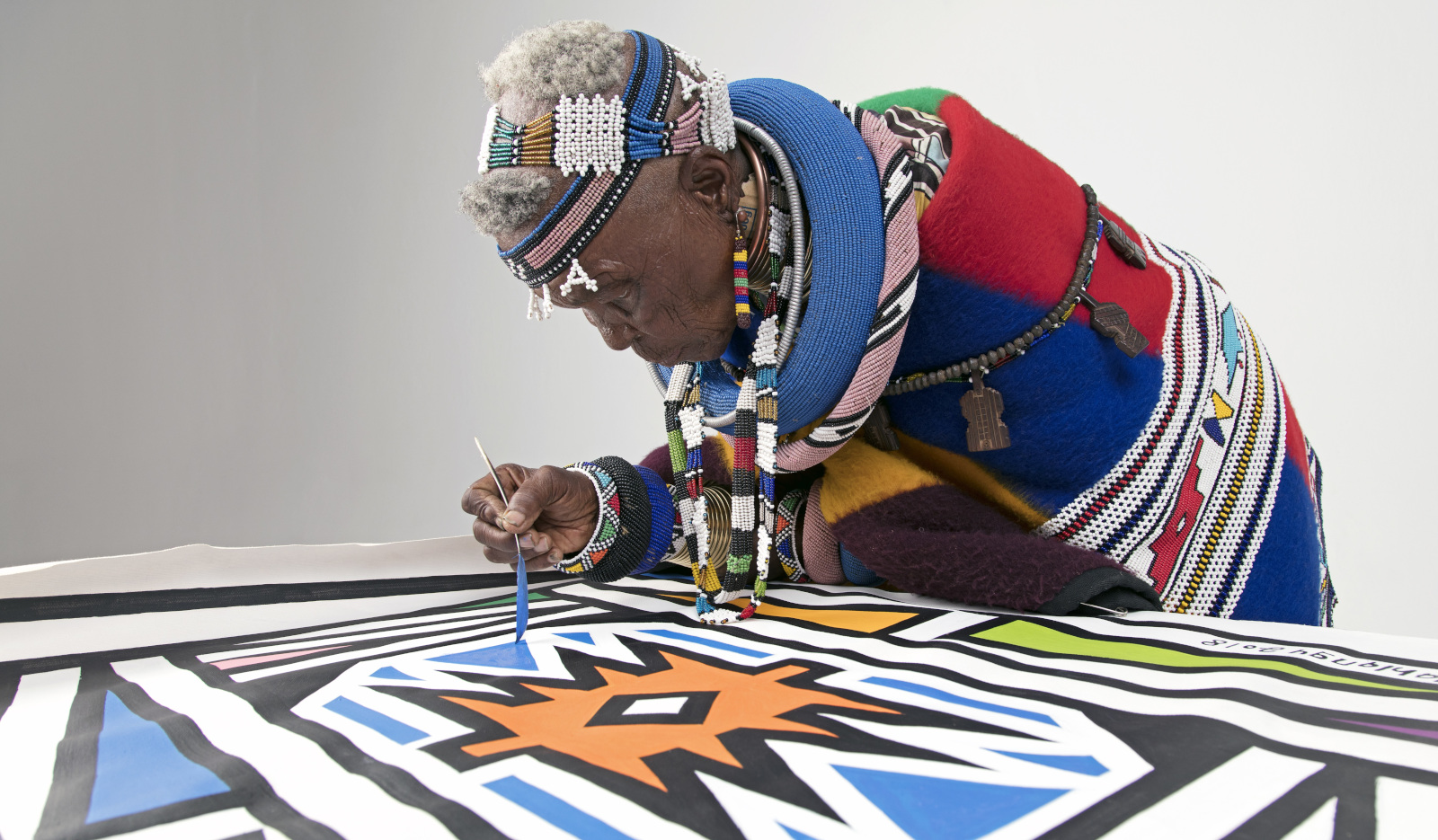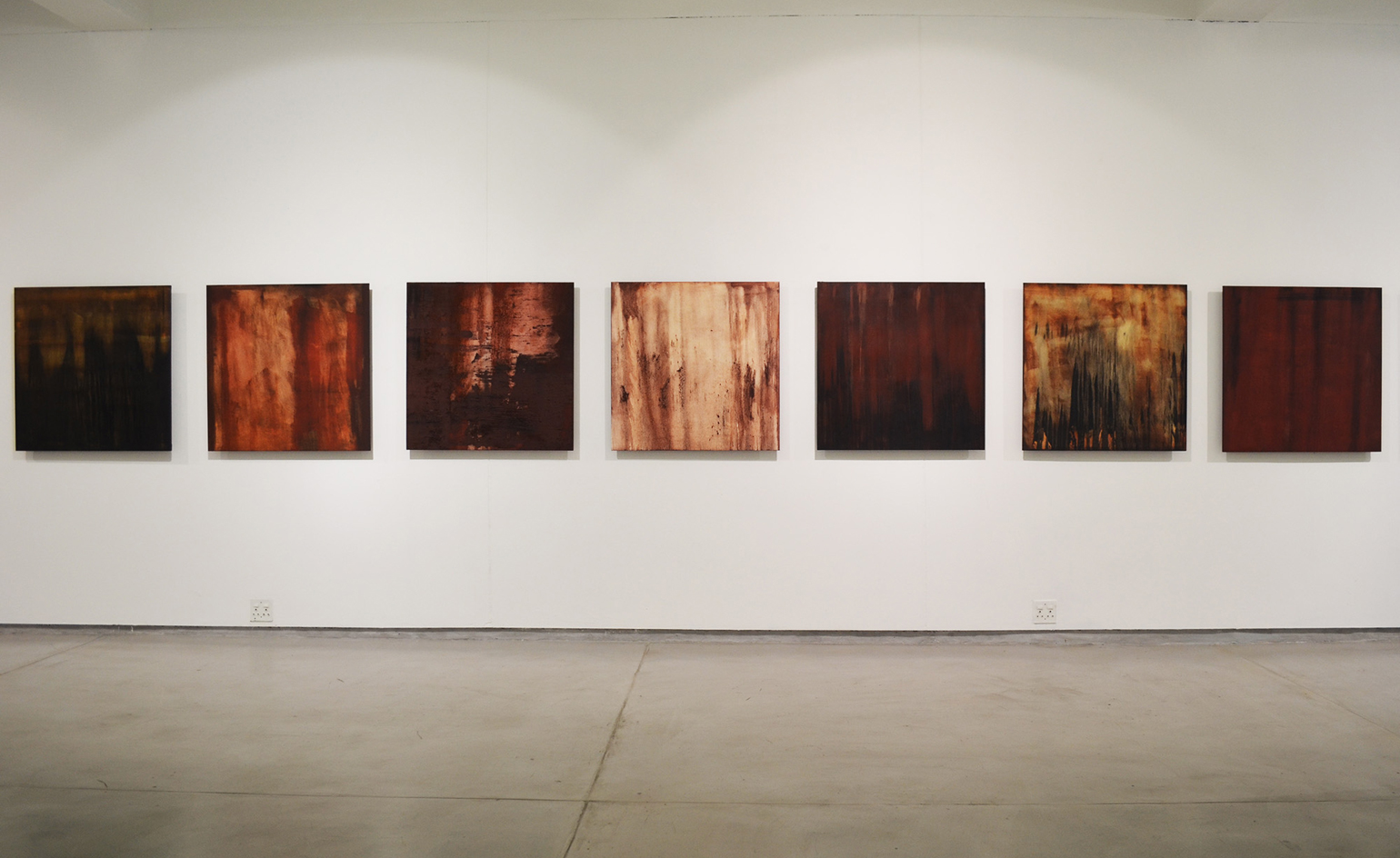‘When We See Us’: Black figurative painting at Cape Town’s Zeitz MOCAA
A group show of Black figurative painting at the Zeitz Museum of Contemporary Art Africa, featuring 156 artists, explores the past and present of self-representation

When the charismatic Swiss-Cameroonian curator Koyo Kouoh took over the helm of Cape Town’s Zeitz Museum of Contemporary Art Africa ( Zeitz MOCAA) in May 2019, she made it her primary mission to focus on individual artists. ‘So many ideas and positions [about Africa] have been lumped into group shows, and not enough work has been done on individual voices,’ said Kouoh at the time – and promptly directed her energies to overseeing well-received museum solos for Otobong Nkanga, Johannes Phokela and Tracey Rose. ‘That doesn’t mean we won’t do group shows,’ she pre-emptively added.
Honouring that promise and aiming for the moon, Zeitz MOCAA’s latest exhibition under Kouoh’s stewardship is a maximalist affair with a pulsing pop heart. ‘When We See Us: A Century of Black Figuration in Painting’ features more than 200 paintings by 156 artists from Africa and its global diaspora. Jointly curated by Kouoh and assistant curator Tandazani Dhlakama, the line-up includes a who’s who of important earlier 20th-century painters, among them Wifredo Lam and Horace Pippin. The exhibition also leans heavily into the present, showing recent works by rising stars like Roméo Mivekannin and Thenjiwe Niki Nkosi alongside arresting pieces by market darlings Amoako Boafo and Amy Sherald. Gucci is the presenting sponsor.

Installation views, ‘When We See Us: A Century of Black Figuration in Painting’, 2022, Zeitz MOCAA
Some curmudgeonly early viewers have taken issue with the exhibition’s easy embrace of the market. Speaking in March, nine months ahead of the gala event inaugurating ‘When We See Us’, Kouoh explained that the project was very much inspired by the ‘renewed prominence of Black figuration’ at market and in museums. ‘We welcome this development for many reasons, not least because, despite cyclical announcements of the death of painting, painting nevertheless remains a central and indestructible medium of expression used by so many artists in our curatorial purview – Africa and its vast diaspora.’
Medium aside, pronouns matter to a fuller appreciation of ‘When We See Us’. The exhibition’s title is a play on director Ava DuVernay’s 2019 Netflix miniseries When They See Us, a crime drama exploring racial antagonisms in America. ‘We wanted to flip things around and change perspective,’ explained Kouoh. By substituting ‘they’ with ‘we’, the exhibition places Black self-representation front and centre. ‘In all my work and endeavours, my drive is to create a language and a space for us to speak to ourselves, particularly because our humanity, our practices, our achievements, our histories have been so defined by others, by proxy.’

Installation views, ‘When We See Us: A Century of Black Figuration in Painting’, 2022, Zeitz MOCAA
Shunning chronology or regionalism in favour of a thematic display, ‘When We See Us’ unfolds across six sections devoted to, in sequence, the everyday, joy and revelry, repose, sensuality, spirituality, and triumph and emancipation. The exhibition design – courtesy of Cape Town practice Wolff Architects – encompasses trim seating reminiscent of Richard Neutra, raw pine elements, curtains, and freestanding walls that enable overlapping viewing. Musician Neo Muyanga has additionally curated room-appropriate playlists, using music by Miriam Makeba, Ebo Taylor, Youssou N’Dour, NWA and others to add verve (or distraction) to the human encounter demanded by this exhibition.

Installation views, ‘When We See Us: A Century of Black Figuration in Painting’, 2022, Zeitz MOCAA
A brief wall text introduces each section. The content is partisan and told from the perspective of an enthused participant, not a dispassionate observer. ‘There is beauty in our daily lives,’ reads a text adjacent to the exhibition’s opening two works. South African George Pemba’s oil painting The Gardener (1991), depicting a man tending a suburban garden, is paired with an untitled gouache from 1940 by American Romare Bearden that shows a woman with calloused knuckles bearing a harvest of tobacco leaves. The combination is revealing, beyond the focus on labour and the sublimated histories they gesture to. Among the 28 nationalities represented, Americans dominate, with 35 artists, followed by South Africa, with 16 artists. Artists from the Democratic Republic of the Congo, Kenya and Nigeria are the next most represented nationalities.
But ‘When We See Us’ is not an exhibition about nationalities, which were already complicated by 1947 when South African Gerard Sekoto settled in Paris, five years ahead of American Beauford Delaney. Both artists died in penury in exile. Both have humdingers on show: Sekoto’s Evening on the Corner (1943) shows a gathering of five figures observed in low light, while Delaney’s untitled 1970 portrait of a man in striped two-piece pulses with light and colour. It hangs close to Lynette Yiadom-Boakye’s 11pm Friday (2010), a remarkable study of poise and presence, and the show’s midpoint. The Delaney is a fitting place to pause and draw one’s breath in preparedness for the thrilling surprises still to come.
Wallpaper* Newsletter
Receive our daily digest of inspiration, escapism and design stories from around the world direct to your inbox.
‘When We See Us’, supported by Gucci, runs until 3 September 2023 at Zeitz MOCAA, zeitzmocaa.museum

Installation views, ‘When We See Us: A Century of Black Figuration in Painting’, 2022, Zeitz MOCAA

Installation views, ‘When We See Us: A Century of Black Figuration in Painting’, 2022, Zeitz MOCAA. Far right: Sphephelo Mnguni, Homage, 2022. Top centre: Cheri Samba, Une femme conduisant le monde, 2017
Sean O’Toole is writer, editor and curator based in Cape Town. He has published two books, most recently a 2021 monograph on the expressionist painter Irma Stern, as well as edited three volumes of cultural essays, including 'The Journey: New Positions on African Photography', which received a New York Times critics’ pick for Best Art Books 2021. His exhibition projects include 'Photo book! Photo-book! Photobook!' at A4 Arts Foundation, Cape Town.
-
 Australian bathhouse ‘About Time’ bridges softness and brutalism
Australian bathhouse ‘About Time’ bridges softness and brutalism‘About Time’, an Australian bathhouse designed by Goss Studio, balances brutalist architecture and the softness of natural patina in a Japanese-inspired wellness hub
By Ellie Stathaki
-
 Marylebone restaurant Nina turns up the volume on Italian dining
Marylebone restaurant Nina turns up the volume on Italian diningAt Nina, don’t expect a view of the Amalfi Coast. Do expect pasta, leopard print and industrial chic
By Sofia de la Cruz
-
 Tour the wonderful homes of ‘Casa Mexicana’, an ode to residential architecture in Mexico
Tour the wonderful homes of ‘Casa Mexicana’, an ode to residential architecture in Mexico‘Casa Mexicana’ is a new book celebrating the country’s residential architecture, highlighting its influence across the world
By Ellie Stathaki
-
 Esther Mahlangu’s first retrospective features the iconic BMW 525i Art Car
Esther Mahlangu’s first retrospective features the iconic BMW 525i Art CarEsther Mahlangu showcases ‘Then I knew I was good at painting’ at the Iziko Museums of South Africa in Cape Town
By Nargess Banks
-
 William Kentridge unpacked in dual Cape Town museum survey
William Kentridge unpacked in dual Cape Town museum surveyA double bill across Zeitz MOCAA and Norval Foundation explores the South African artist’s rich oeuvre of sculpture, charcoal drawings, stop-frame animation, multimedia works, tapestries and more
By Sean O'Toole
-
 Zander Blom explores 21st century modernism at Stevenson, Cape Town
Zander Blom explores 21st century modernism at Stevenson, Cape TownBy Daniel Scheffler
-
 Moving mountains: Jonathan Freemantle at Cape Town's Gallery MOMO
Moving mountains: Jonathan Freemantle at Cape Town's Gallery MOMOBy Daniel Scheffler